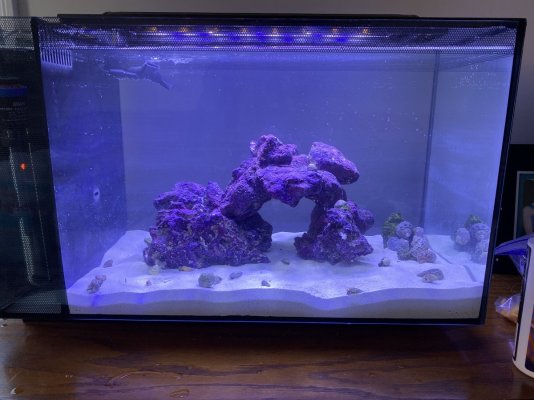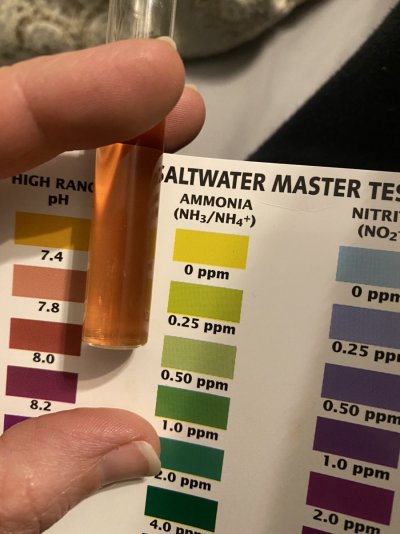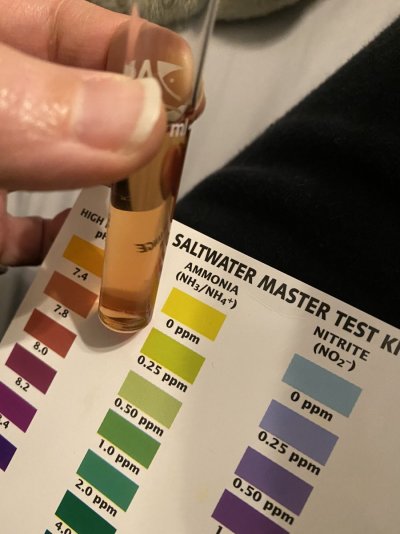Ok. I have a new Evo 13.5 heavily stocked with Mexican turbos, nassaurius, and hermits. There is not a natural food source developed yet so I have been feeding them. The most food comes from the nori sheets I give the Mexican turbos. They eat and poop ALOT. The tank has live sand, media from DT, and added bactiv8 week one. Started having high ammonia, so I have done a couple water changes and added fritz zyme 9 after. The seachem ammonia alert keeps creeping back up to the alert status within a day of the water change.
1. if I do 5 gallon water changes, am I taking out some of the bacteria I added and therefore need to replace?
2. Would it be better to just keep adding the bacteria and let the ammonia ride out?
I had another thread going when my ammonia first spiked but now I’m not 100% sure on the best course of action to keep my little buddies healthy until they are ready to go to the DT tank. Partial water changes vs adding more bacteria or a combo of the two.
1. if I do 5 gallon water changes, am I taking out some of the bacteria I added and therefore need to replace?
2. Would it be better to just keep adding the bacteria and let the ammonia ride out?
I had another thread going when my ammonia first spiked but now I’m not 100% sure on the best course of action to keep my little buddies healthy until they are ready to go to the DT tank. Partial water changes vs adding more bacteria or a combo of the two.
























